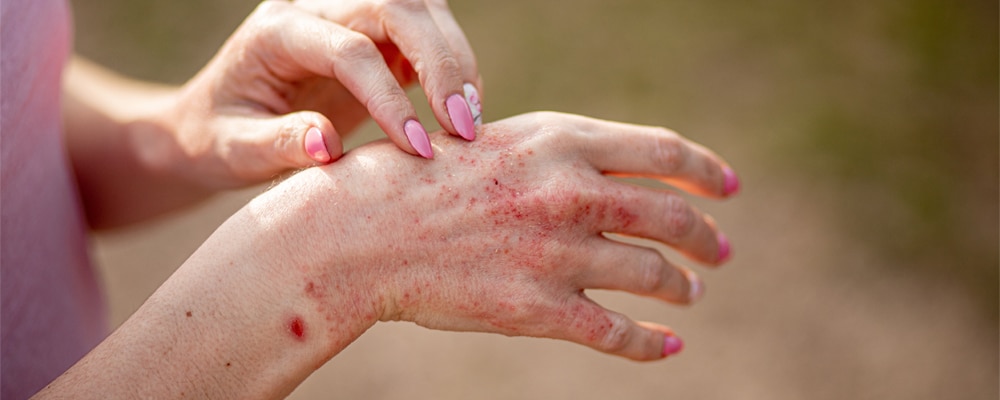It is estimated that two people die of skin cancer every hour, and 20% of Americans will develop skin cancer. It can be very serious – even deadly – which is why it is so important to see a doctor as soon as you notice anything new and strange on your skin. Actinic keratosis is one problem to watch out for.
What is actinic keratosis?
Actinic keratosis appears on the skin as a patch of dry, flaky, or scaly skin, usually between 1 and 3 millimeters in diameter (however, these can grow to be several centimeters). It may look like a rash or even acne. The skin around the patch may be yellow or have spots or even tiny broken blood vessels. These lesions are typically painless, although they may feel tender or itchy, or they may produce a burning sensation.
Who is at risk for actinic keratosis?
Anyone can get actinic keratosis, but those who are in the sun often without protection are most at risk. If you have a history of sunburns or spending a lot of time in the sun, freckle or burn easily when you are in the sun, or have a weakened immune system, you are also at increased risk.
To prevent this and other skin problems, make sure you limit your time in the sun and wear protective clothing when you do go outside. Avoid tanning beds, as these can be just as dangerous as being out in the sun. And always wear sunscreen, even on cloudy days, and reapply often if you are staying outside.
How is actinic keratosis treated?
It can be difficult to distinguish actinic keratosis from other skin problems, but it is important to see your doctor as soon as you notice any skin changes. When diagnosed quickly, actinic keratosis lesions can be successfully removed. If actinic keratosis is left untreated, there is a 5% to 10% chance that it can become cancerous.
If you think you may have actinic keratosis or if something just doesn’t look right, contact Skin Care Research as soon as you can. Don’t wait — call (561) 948-3116 for an appointment today.

